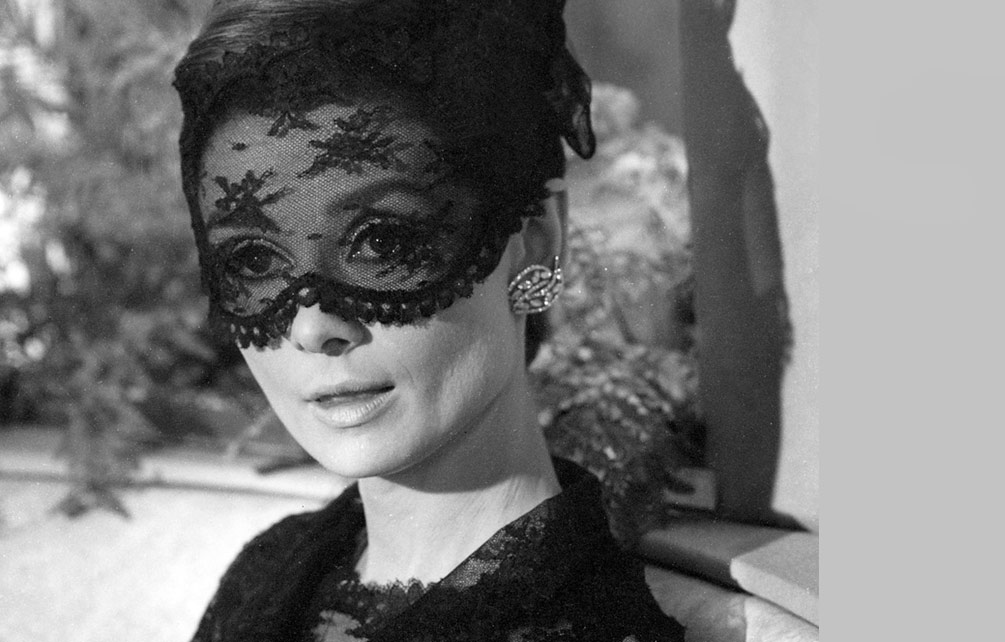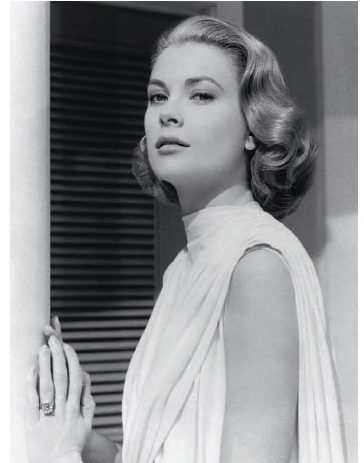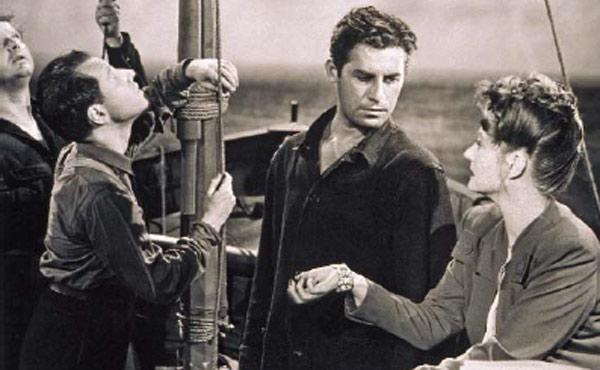CARTIER STEALS THE SCENE

For the first installment of Screen Gems, I chose three of my favorite Cartier scene-stealing moments. The time in which these movies were shot, renowned jewelers were part of the Hollywood dream factory and the jewels they created had the potential to become an integral part of the plot or create trends with the actresses choosing to wear the pieces they owned on celluloid.
On the silver screen, as in real life, jewelry could also be used to develop and define a character’s personality and lines could be written into the script to accommodate a jewel (as in the case of one star who would soon become a real-life princess and wanted to wear her engagement ring during the shooting of the movie.)
“That’s quite a rock Sam,” says ‘C. K. Dexter Haven’ (played by Bing Crosby), to his ex-wife and socialite ‘Tracy Samantha Lord’ (Grace Kelly) in the 1956 film High Society. He then turns to her fiancé, George Kittredge’ and asks: “Did you mine it yourself George?” ‘Dexter’ is referring to the 10.47-carat emerald-cut Cartier engagement ring adorning ‘Tracy’s’ left hand. This was Grace Kelly’s own engagement ring from Prince Rainier III, which she asked director, Charles Walters, if she could wear during the shooting of the film. The ring turned out to be perfect fit for the part of a newly engaged socialite and appears often in the film, alongside Kelly and Crosby and co-stars Frank Sinatra and Celeste Holm.

A Cartier diamond bracelet features against the far darker backdrop of Hitchcock’s World War II psychological drama Lifeboat (1944) based on a John Steinbeck story. In the first scene, ‘Constance Porter’ (Tallulah Bankhead) appears in a lifeboat, amid a group of other survivors from a torpedoed ship, wearing a Cartier diamond bracelet. A famous reporter, she also has a camera, a fur coat, a gold cigarette case, a typewriter, a pocket flask of whiskey, and a handbag surrounding her. Her possessions gradually turn into necessities for survival, rather than the luxury items they once were. ‘Connie’ uses her coat to keep a shell shocked woman warm; her gold lighter sterilizes the knife that is used to amputate a passenger’s leg. Eventually, the one possession she has left that she can offer the castaways—who are at this point starving—is the diamond bracelet. A gift from her first husband, it had functioned as a good luck charm for fifteen years. The survivors want to catch fish, but realize they do not have anything to use as bait. ‘Connie’ removes the bracelet from her wrist and says: “Sure we have bait—by Cartier!” When one of the passengers asks “are you kidding?” she remarks “Kidding my foot, I’m starving. “…More conversation ensues and Connie adds, “I can recommend the bait. I ought to know… I bit on it myself.” She then looks on, laughing, as the bracelet is washed away just at the point they think they have caught a fish.

The trend of lending jewelry to be displayed in movies was started by the big houses in the 1930s during Hollywood’s golden age. Trabert & Hoeffer-Mauboussin (T&HM) was the first house to receive their name onscreen in an opening scene with additional renowned houses’ credits rolling into the 1950s and ’60s. But Cartier was only the second jeweler to get top billing in the opening credits of How to Steal a Million. A 1966 heist comedy, which lists Peter O’Toole and Audrey Hepburn in the lead roles, also announces ‘Ms. Hepburn’s jewelry by Cartier, Paris’. In various scenes in which the main protagonists meet to discuss how to perform the robbery, Hepburn as ‘Nicole’ wears Cartier diamond and a tank watch. In her iconic style, she appears in a scene in a lace mask and an epic pair of cluster diamond clip earrings that are as on point today as they were in the mid 60s. If only a line in the movie would have mentioned Cartier, all would have been complete. But the exchange between O’Toole’s and her character about her wardrobe, which, with the exception a few of her earliest films was always designed by Givenchy, was also a great moment in throwaway lines that mostly only insiders and serious Hepburn fans caught.
When Nicole. Hepburn’s character must change into a cleaning-woman costume for the heist O’Toole’s Simon, says, “Yes, that’s fine. That does it.”
Nicole replies, “Does what? “
When Simon retorts, “Well, for one thing, it gives Givenchy a night off.”
photo credit for opening shot: Audrey Hepburn wearing Cartier earrings in How To Steal A Million. Photo Credit: [ 20th Century Fox / The Kobal Collection at Art Resource NY ]
And THAT is just one of the many reasons we love screen gems.
If you are a movie geek like me- you might consider indulging in a weekend-long Cartier-in-film marathon. Some of my other favorite moments on screen include:
The first The Great Gatsby film, in which Cartier provided all of the 20s-30s fabulous sautoirs, ropes of pearls, tassel necklaces, rivières and brooches for the characters of Daisy and Jordan as well as the marquise shaped engagement ring, which, after seeing the film, one woman purchased the by saying, “ I want the Daisy Ring.”
Merle Oberon’s three diamond Cartier floral clips that she received from her (then) husband, Harold Koda as a wedding gift were not only sentimental to her, but convertible. She could change around the pieces and wear them as a necklace or as clips in her hair, both which she does in the film Till We Meet Again
Although Marlene Dietrich wore her favorite and most spectacular Van Cleef & Arpels ruby and diamond bracelet in Stage Fright along with a complementary necklace, her other jewels were provided by Cartier. It’s definitely worth watching to see all of the fabulous jewels in the film–plus it’s on my short list of Hitchcock favorites.
I prefer Steve McQueen wearing a Cartier tank as one of the three watches he wears in the original The Thomas Crown Affair compared with the prominent, but out of place and time, tank owned and worn by Rudolph Valentino in The Sheik.
I have seen Gloria Swanson as Norma Desmond at least a half dozen times in Sunset Boulevard and have coveted her (own) Cartier rock crystal and diamond cuffs that she wears in the film and in many publicity shots for the movie.
Two more recent films that went from real life to the reel of film comprised Nicole Kidman playing Grace: Princess of Monaco and the Madonna directed W.E, based on the life of Wallis Simpson. Cartier recreated all of the original jewels in precious metals and faux stones for both films in their London factories and then when the film and publicity tours were over, destroyed them so they could never be copied or imitated.
Here’s to you finding your own screen gems and, when you do, we would love it if you’d share them with us.




